Creating an impactful home entrance design is essential in shaping the first impression of your living space, and a greatly designed entrance can transform a simple entryway into a welcoming and impactful area, setting the tone for the rest of your home. From elegant door designs to inviting walkways, a well-thought-out entrance is a key to designing an unforgettable ambiance and adding curb appeal.
This guide provides comprehensive insights into designing a home entrance that will explore tips, styles, and technical aspects to ensure your entryway is practical and serves its purpose as a beautiful design .
Continue to read to find out more.
1- Key Elements of Entrance Design
A successful home entrance balances several key elements: the door itself, lighting, landscaping, and the right accessories. The choice of door can define the style of your home, while effective lighting enhances both aesthetics and safety.
Landscaping plays a crucial role in creating an approachable path, and accessories like doormats and house numbers add finishing touches.

This guide explores each of these components, providing practical tips and creative ideas to design an entrance that beautifully matches with your home's essence.
2- Tips for an Appealing Entrance
Your entrance should reflect the overall style of your home. Consider materials, colors, and designs that complement your architectural style.
2.1. Door Design
Selecting the right door is pivotal in home entrance design. For traditional homes, consider solid wood doors with classic designs. Contemporary homes might benefit from doors with clean lines and minimalist features. The color of your door should contrast yet harmonize with your home’s exterior, making it stand out while still fitting into the overall design.
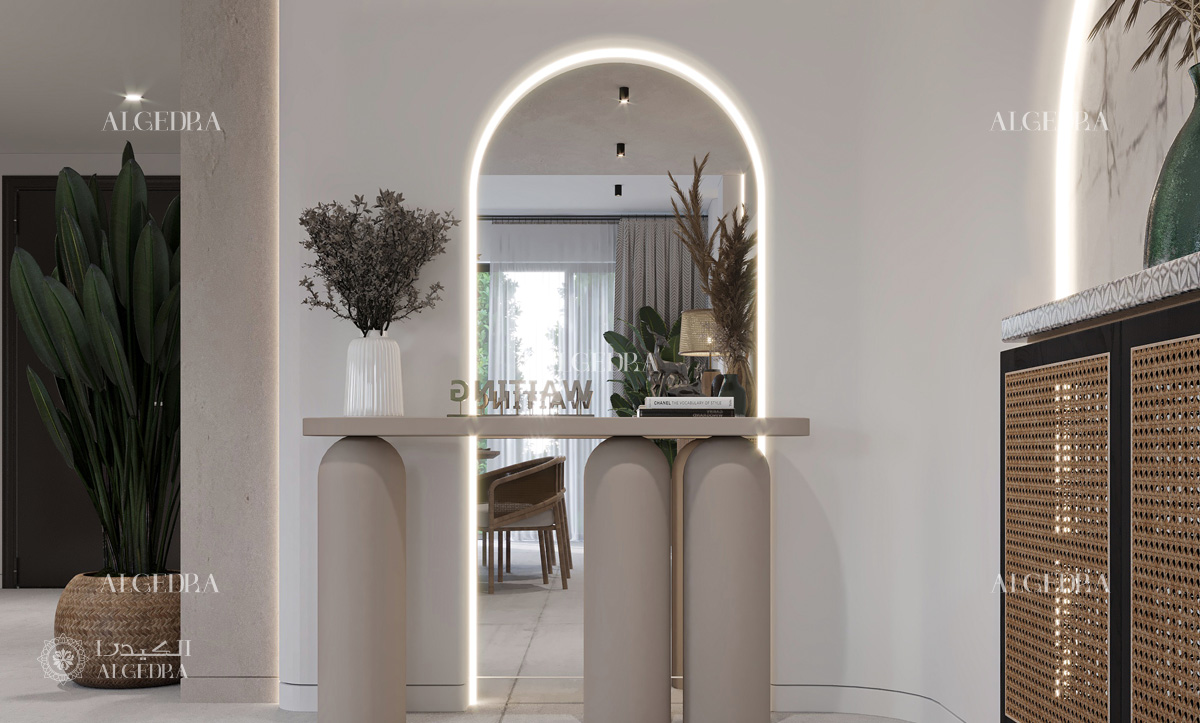
Modern: Sleek, with clean lines, often featuring glass or metal.
Traditional: Solid wood with classic panels or intricate glass inserts.
Rustic: Weathered or reclaimed wood, often with heavy hardware.
Eclectic: Bold colors or unusual materials, often a conversation starter.
2.2. Lighting the Way
A well-lit entrance is welcoming and ensures safety. Consider a mix of overhead, sidelight, and pathway lighting to create a layered effect. LED options are energy-efficient and long-lasting, reducing the need for frequent replacements. Smart lighting systems are also worth considering, as they offer convenience and can be tailored to your lifestyle.

Functional & Decorative Lighting: Combine overhead lights with accent lighting.
Sensor Lights: For modern homes, incorporating technology for convenience and security.
Lanterns and Sconces: In traditional designs, use classic fixtures for a timeless look.
2.3. Landscaping and Pathways
Landscaping is an extension of your home's personality. For a modern look, opt for clean lines and minimalistic greenery. Traditional styles might call for lush plantings and curved pathways. No matter the style, ensure the path to your door is clear and well-maintained, as this guides your guests to the entrance.
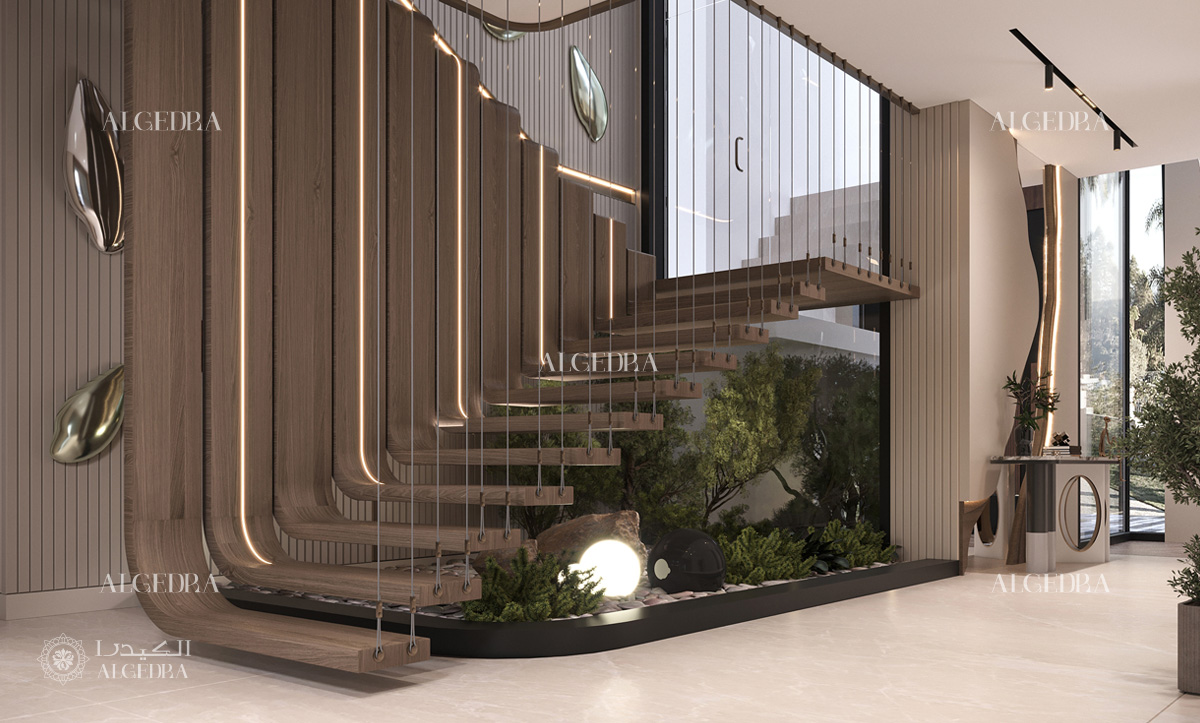
Modern Landscaping: Geometric patterns and minimalistic greenery.
Traditional Landscaping: Lush plantings, perhaps with a classic rose garden.
Rustic Pathways: Natural stone, uneven patterns, and native plants.
Eclectic Choices: A mix of plant types and colors, possibly with artistic sculptures.
2.4. Accessorizing Your Entrance
Accessories like house numbers, mailboxes, and doormats add character. Choose items that complement your home’s style and color scheme. For a tech-savvy touch, consider a smart doorbell or a sleek, modern mailbox.
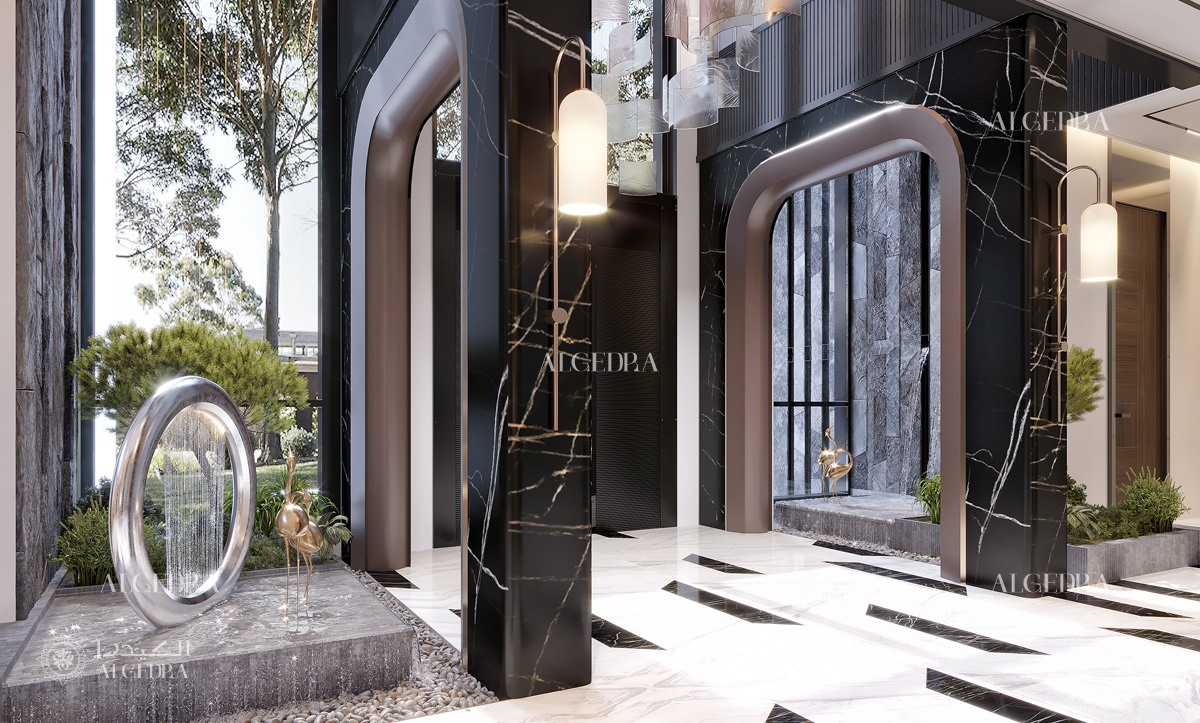
House Numbers and Mailboxes: Reflect the style of your home, whether sleek and modern or ornate and classic.
Doormats and Planters: Choose items that add personality and warmth.
Smart Home Accessories: For a tech-forward approach, consider smart locks and doorbells.
3- Creating a Cohesive Look
The key to a successful entrance design is cohesion. Each element should complement the others, creating a unified look. For instance, in a modern home, align the sleek lines of your door with the landscaping and lighting fixtures. In a traditional setup, ornate lighting and classic wooden doors create harmony.
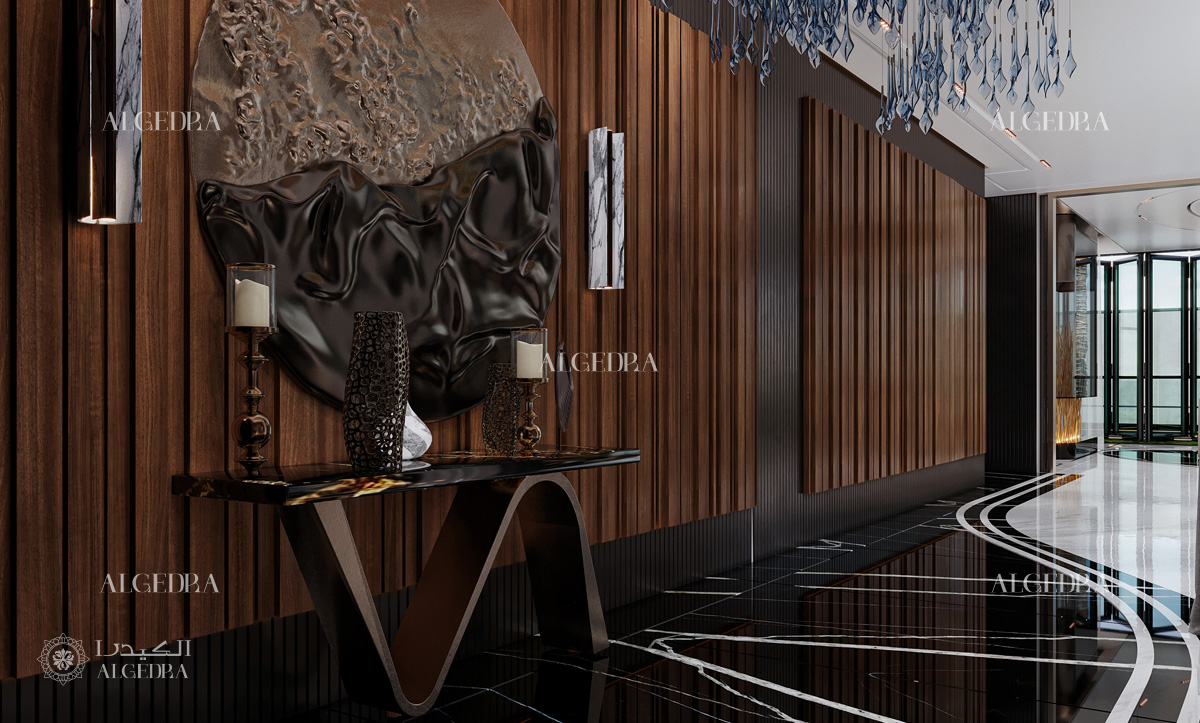
4- Technical Considerations for a Lasting Impression
Durability and Weather Resistance: Choose materials that withstand local weather conditions.
Energy Efficiency: Opt for eco-friendly and energy-saving options, especially in lighting.
Maintenance: Consider the maintenance required for your chosen materials and designs.
5- Applying Different Styles in Entrance Design
5.1. Modern Entrance Design
Simplicity and clean lines are key in modern design. Opt for a sleek, minimalist door, perhaps with glass elements for a contemporary touch. Lighting should be unobtrusive yet effective, using geometric shapes and neutral colors. Landscaping in modern design often involves structured plants and minimalistic paths.
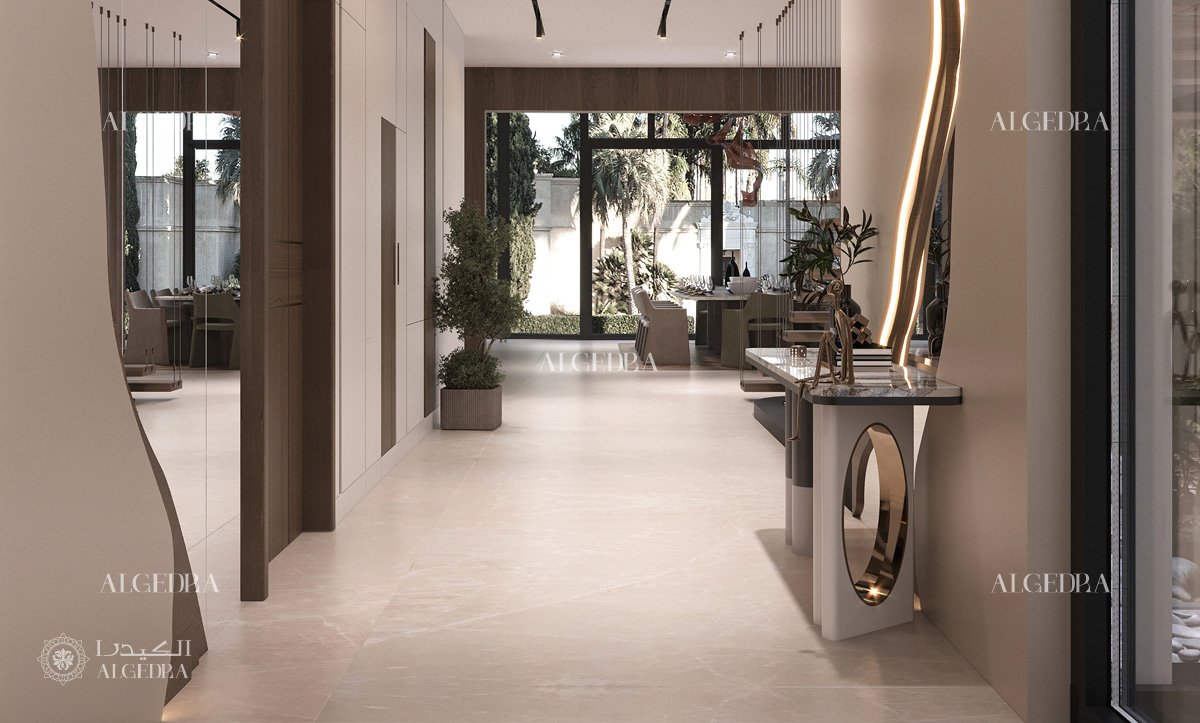
5.2. Traditional Entrance Design
Traditional entrances embrace warmth and elegance. Choose a classic wooden door, perhaps with intricate details. Lighting fixtures in brass or wrought iron add a timeless charm.

Landscaping can include lush greenery and classic pathway designs, like cobblestone or brick.
5.3. Rustic Entrance Design
Rustic design is about natural beauty and rugged charm. A wooden door with a weathered look or wrought iron details fits well. Lighting should be warm and inviting, using materials like copper or iron. For landscaping, opt for wildflowers and natural stone paths.

5.4. Eclectic Entrance Design
Eclectic design is a harmonious blend of various styles. The door can be a unique piece, combining different materials or colors. Lighting can be a mix of different styles, reflecting a diverse yet cohesive look. Landscaping and accessories in eclectic design are about personal expression and creativity.
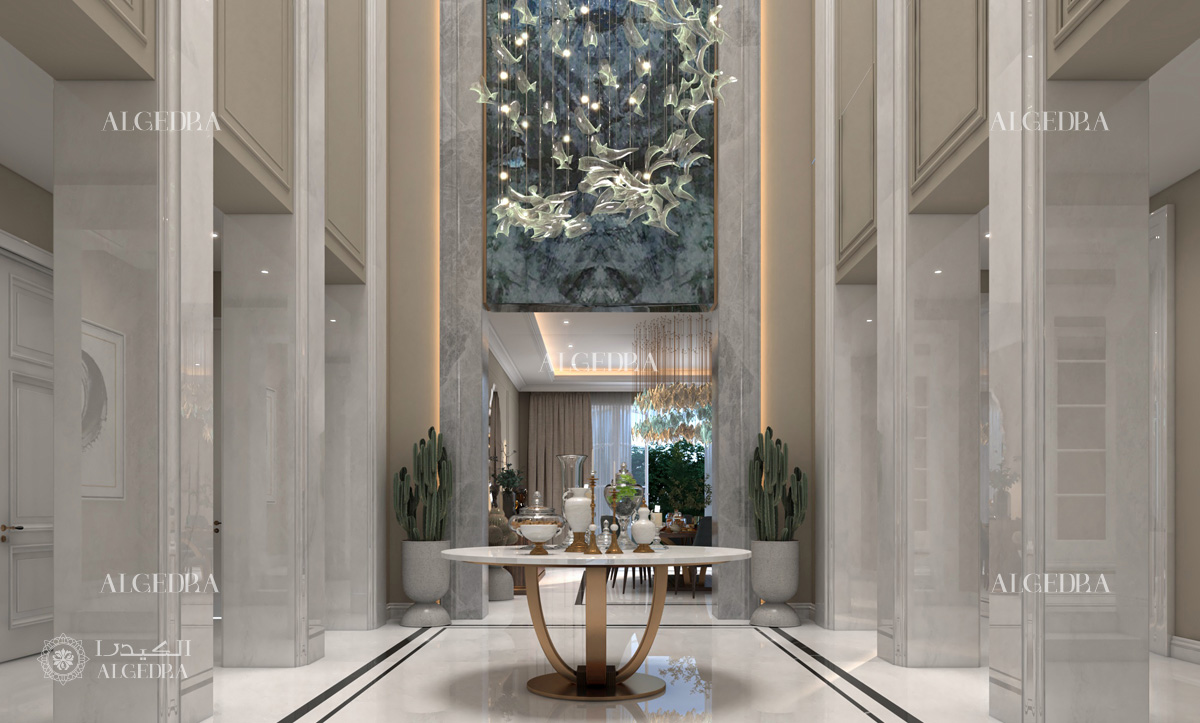
Designing an enchanting entrance requires a thoughtful approach. Key elements include the door, lighting, landscaping, and thoughtful accessorizing.
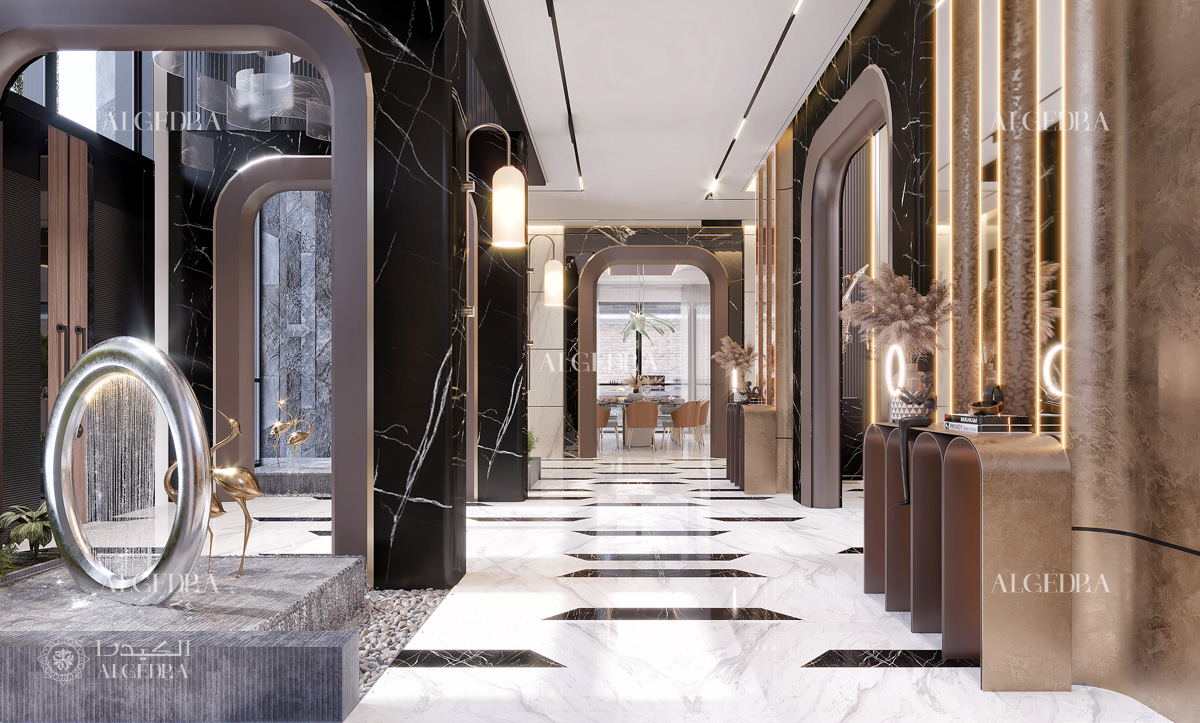
Whether modern or traditional, rustic or eclectic, the perfect entrance is one that's thoughtfully designed and carefully executed. Use this guide as a roadmap to transform your home's entrance into an inviting, expressive, and memorable space.